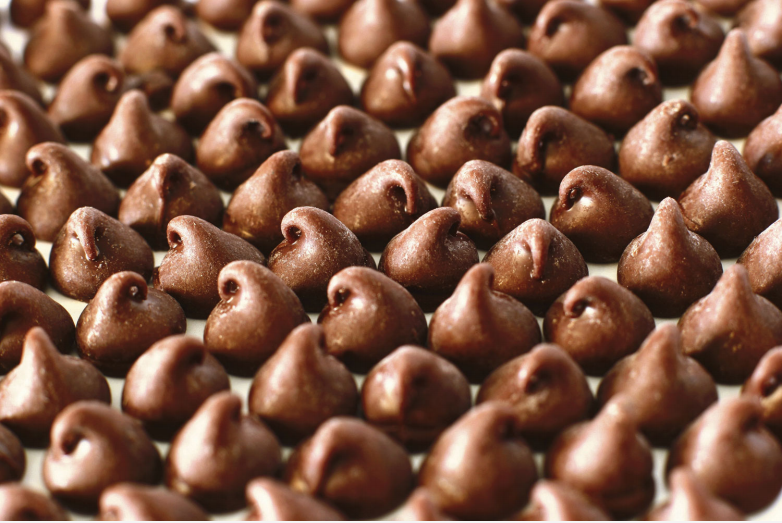65 8.5 The Weighted Average Method
Learning Objectives
- Use four steps to assign costs to products using the weighted average method.
Most companies use either the weighted average or first-in-first-out (FIFO) method to assign costs to inventory in a process costing environment. The weighted average method5 includes costs in beginning inventory and current period costs to establish an average cost per unit. The first-in-first-out (FIFO)6 method keeps beginning inventory costs separate from current period costs and assumes that beginning inventory units are completed and transferred out before the units started during the current period are completed and transferred out. We focus on the weighted average approach here. We discuss FIFO shortly.
Question: The primary goal stated in Chapter 2 and Chapter 3, and continued in this chapter, is to assign product costs to products. In a process costing system , cost per equivalent unit7 is the term used to describe the average unit cost for each product. How is the concept of cost per equivalent unit used to assign costs to (1) completed units transferred out and (2) units still in work-in-process (WIP) inventory at the end of the period?
The Four Key Steps of Assigning Costs
Recall that Desk Products, Inc., has two departments—Assembly and Finishing. Although this chapter focuses on the Assembly department, the Finishing department would also use the four steps to determine product costs for completed units transferred out and ending WIP inventory. Table 8.2 presents information for the Assembly department at Desk Products for the month of May. Review this information carefully as it will be used to illustrate the four key steps.
| Assembly Department—Month of May |
|---|
| The company had 3,000 units in beginning WIP inventory; all were completed and transferred out during May. |
|
During May, 6,000 units were started. Of the 6,000 units started:
|
| Costs in beginning WIP inventory totaled $161,000 (= $95,000 in direct material + $40,000 in direct labour + $26,000 in overhead) |
| Costs incurred during May totaled $225,000 (= $115,000 in direct materials + $70,000 in direct labour + $40,000 in overhead) |
Question: Costs for the Assembly department totaled $386,000 for the month of May ($386,000 = $161,000 in beginning WIP inventory + $225,000 incurred during May). How much of the $386,000 should be assigned to (1) completed units transferred out to the Finishing department and (2) units remaining in the Assembly department ending WIP inventory?
Question: What are the two categories used to summarize the physical flow of units?
- Answer
Question: Based on the previous information for Desk Products, Inc., we now know that 4,000 units were completed and transferred out, and 5,000 units were in ending WIP inventory at the end of May. How do we convert this information into equivalent units?
-
Later in step 3, we will use equivalent unit information for the Assembly department to calculate the cost per equivalent unit.
Figure 8.4 – Flow of Units and Equivalent Unit Calculations for Desk Products’ Assembly Department
a This column represents actual physical units accounted for before converting to equivalent units.
b Equivalent units = Number of physical units × Percentage of completion. Units completed and transferred out are 100 percent complete. Thus equivalent units are the same as the physical units. (Information is from Table 8.2.)
c Equivalent units= Number of physical units × Percentage of completion. For direct materials, 3,000 equivalent units = 5,000 physical units × 60 percent complete; for direct labor and overhead, 1,500 equivalent units = 5,000 physical units × 30 percent complete. (Information is from Table 8.2.)
Step 2. Summarize the costs to be accounted for (separated into direct materials, direct labor, and overhead).
Question: How do we summarize the costs that are used to calculate the cost per equivalent unit?
- Answer
Step 3. Calculate the cost per equivalent unit.
Question: We now have the costs (Figure 8.5) and equivalent units (Figure 8.4) needed to determine the cost per equivalent unit for direct materials, direct labor, and overhead. How do we use this information to calculate the cost per equivalent unit?
Step 4. Use the cost per equivalent unit to assign costs to (1) completed units transferred out and (2) units in ending WIP inventory
Question: Recall our primary goal of assigning costs to completed units transferred out and to units in ending WIP inventory. How do we accomplish this goal?
- Answer
Journalizing Costs Assigned to Units Completed and Transferred
Question: Once the four-step process is complete, a journal entry must be made to record the transfer of costs out of the Assembly department and into the Finishing department. How do we record the costs associated with units completed and transferred out?
- Answer
Business in action 8.4 – The Production Process for Hershey’s Chocolate
Hershey Foods Corp. is best known for its chocolate products, including brands like Almond Joy, Hershey’s Kisses, and Reese’s. Hershey’s products are sold in more than 90 countries worldwide. According to Hershey, more than 80 million Kiss-shaped products are made every day!

© Thinkstock
Several sequential stages of production are required to produce chocolate at Hershey:
- Fermentation. Cocoa beans are placed in large heaps for one week to allow the cocoa flavor to develop.
- Roasting. The cocoa beans are roasted at very high temperatures.
- Hulling. A hulling machine separates the shell from the inside of the bean (called the nib).
- Milling. The nibs are ground into chocolate liquor (a liquid with a pure chocolate flavor that contains no alcohol).
- Mixing. The chocolate liquor is mixed with cocoa butter, sugar, and milk. This mixture is dried into a brown powder, called chocolate crumb, and processed into chocolate paste.
- Molding. Machines are used to fill more than 1,000 molds per minute with chocolate. The chocolate is then chilled to form solid candy.
- Packaging. The candy is wrapped, packaged, and ready to be shipped.
Hershey likely uses a process costing system since it produces identical units of product in batches employing a consistent process. Process costing systems require the use of work-in-process inventory accounts for each process. Thus Hershey would track production costs using separate work-in-process inventory accounts for each stage of production.
Source: Hershey’s, “Home Page,” http://www.hersheys.com.
Key Takeaway
- Four steps are used to assign product costs to (1) completed units transferred out and (2) units in work-in-process inventory at the end of the period.
- The four-step process must be performed for each processing department and results in a journal entry to record the costs assigned to units transferred out.
Review problem 8.4
Kelley Paint Company uses the weighted average method to account for costs of production. Kelley manufactures base paint in two separate departments—Mixing and Packaging. The following information is for the Mixing department for the month of March.
- A total of 40,000 units (measured in gallons) were in beginning WIP inventory. All were completed and transferred out during March.
- A total of 70,000 units were started during March. Of the 70,000 units started,
- 20,000 units were completed and transferred out to the Packaging department (100 percent complete with respect to
direct materials, direct labor, and overhead), and 50,000 units were partially completed and remained in ending WIP inventory on March 31 (90 percent complete for
-
direct materials, 70 percent complete for direct labor, and 30 percent complete for overhead, which is applied based on machine hours).
- 20,000 units were completed and transferred out to the Packaging department (100 percent complete with respect to
- Costs in beginning WIP inventory totaled $229,000 (= $98,000 in direct materials+ $41,000 in direct labor+ $90,000 in overhead).
- Costs incurred during March totaled $165,000 (= $70,000 in direct materials+ $35,000 in direct labor+ $60,000 in overhead).
Required:
- Use the four key steps to assign costs to units completed and transferred out and to units in ending WIP inventory for the Mixing department.
- Prepare the journal entry necessary at the end of March to record the transfer of costs associated with units completed and transferred to the Packaging department.
- Answer
- Definitions
- A method of process costing that includes costs in beginning inventory and current period costs to establish an average cost per unit.
- A method of accounting for product costs that assumes that the first units completed within a processing department are the first units transferred out; beginning inventory costs are maintained separately from current period costs.
- The average unit cost for each product.



